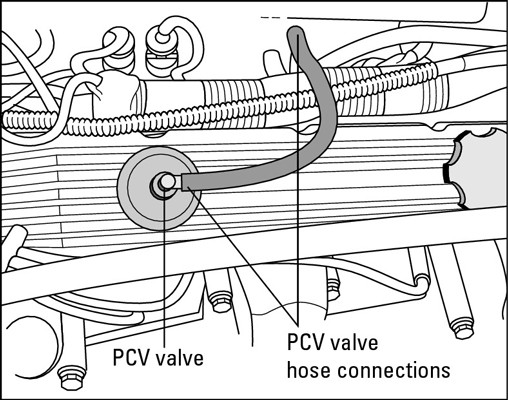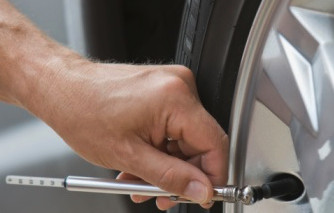**Do You Have Knowledge of V2X (Vehicle-to-Everything) Systems?**
Do you have knowledge of V2X (Vehicle-to-Everything) systems? Absolutely! V2X technology is revolutionizing the automotive industry by connecting vehicles to everything around them, improving safety, efficiency, and the overall driving experience. CARDIAGTECH.NET provides the diagnostic tools and equipment necessary to understand, diagnose, and repair these advanced systems, ensuring your shop stays ahead of the curve in automotive technology. Explore cutting-edge vehicle communication, enhanced road safety, and smart transportation solutions with us.
1. What Exactly Are V2X (Vehicle-to-Everything) Systems?
V2X, or Vehicle-to-Everything, refers to technology allowing vehicles to communicate with any entity that may affect them. This includes other vehicles (V2V), infrastructure (V2I), pedestrians (V2P), and the network (V2N). According to the U.S. Department of Transportation, V2X technology has the potential to significantly reduce traffic accidents and improve traffic flow.
V2X systems use various communication protocols such as Dedicated Short-Range Communications (DSRC) and Cellular-V2X (C-V2X). These systems transmit information about a vehicle’s speed, location, and direction, as well as warnings about potential hazards. The goal is to create a safer, more efficient, and more connected transportation ecosystem. The technology supports applications like collision avoidance, traffic management, and automated driving.
2. What are the Key Components of V2X Systems?
Understanding the core elements of V2X is essential for effective diagnostics and repair. These include:
2.1 Onboard Units (OBUs)
OBUs are installed in vehicles to transmit and receive V2X messages. They process data from sensors and other inputs, then broadcast relevant information to other V2X-equipped entities.
2.2 Roadside Units (RSUs)
RSUs are infrastructure-based communication devices installed along roadways. They broadcast information to vehicles and collect data from them, facilitating communication between vehicles and traffic management centers.
2.3 Communication Protocols
V2X systems primarily use DSRC and C-V2X for communication. DSRC is a Wi-Fi-based technology, while C-V2X uses cellular networks. The choice of protocol depends on factors like range, latency, and reliability.
2.4 Sensors
V2X relies on various sensors, including radar, lidar, and cameras, to gather data about the vehicle’s surroundings. This data is crucial for making informed decisions and providing timely warnings.
2.5 Software and Algorithms
Sophisticated software and algorithms process the data collected by sensors and communication devices. These algorithms enable features like collision warning, adaptive cruise control, and traffic optimization.
3. What Are the Different Types of V2X Communication?
V2X communication encompasses several types, each designed to address specific needs and use cases. Here are the primary categories:
3.1 Vehicle-to-Vehicle (V2V)
V2V communication allows vehicles to exchange information directly with each other. This helps drivers avoid collisions by alerting them to potential hazards, such as sudden stops or lane changes. For example, if a car ahead suddenly brakes, it can send a message to nearby vehicles, giving them more time to react. The National Highway Traffic Safety Administration (NHTSA) estimates that V2V technology could prevent up to 80% of all crashes involving unimpaired drivers.
3.2 Vehicle-to-Infrastructure (V2I)
V2I communication connects vehicles to roadside infrastructure, such as traffic signals, road signs, and construction zones. This provides drivers with real-time information about traffic conditions, road hazards, and optimal routes. For instance, a traffic signal can communicate its timing to approaching vehicles, allowing them to adjust their speed to avoid stopping. According to a study by the Federal Highway Administration, V2I technology can reduce travel times by up to 25%.
3.3 Vehicle-to-Pedestrian (V2P)
V2P communication alerts drivers to the presence of pedestrians, especially in low-visibility conditions or at intersections. Pedestrians equipped with smartphones or other devices can transmit their location to nearby vehicles, reducing the risk of accidents. A report by the Governors Highway Safety Association found that pedestrian fatalities have been increasing in recent years, making V2P technology crucial for improving safety.
3.4 Vehicle-to-Network (V2N)
V2N communication connects vehicles to a central network, allowing for over-the-air software updates, remote diagnostics, and access to cloud-based services. This enables automakers to improve vehicle performance and address potential issues proactively. For example, a vehicle can receive updates about traffic conditions and adjust its route accordingly. According to McKinsey, V2N technology can unlock new revenue streams for automakers through connected services.
4. How Does V2X Technology Improve Road Safety?
V2X technology significantly enhances road safety by providing drivers with real-time information and warnings about potential hazards. Here are several ways V2X improves safety:
4.1 Collision Avoidance
V2V communication enables vehicles to detect potential collisions before they occur. By exchanging data on speed, location, and direction, vehicles can alert drivers to impending crashes, giving them more time to react. For example, if a vehicle is about to run a red light, it can send a warning to nearby cars, preventing a collision.
4.2 Blind Spot Warning
V2X systems can alert drivers to vehicles in their blind spots. Using sensors and communication technology, the system detects vehicles that are not visible in the driver’s mirrors and provides a warning. This is particularly useful during lane changes and merges.
4.3 Emergency Electronic Brake Light (EEBL)
EEBL alerts drivers when a vehicle ahead suddenly brakes. This is especially helpful in situations where visibility is limited, such as during heavy rain or fog. The system transmits a message to nearby vehicles, warning them of the sudden deceleration.
4.4 Cooperative Adaptive Cruise Control (CACC)
CACC allows vehicles to maintain a safe following distance by automatically adjusting their speed based on the speed of the vehicle ahead. This reduces the risk of rear-end collisions and improves traffic flow. V2X technology enables CACC to be more effective by providing real-time data on the speed and location of surrounding vehicles.
According to the National Highway Traffic Safety Administration (NHTSA), V2X technologies have the potential to prevent or mitigate a significant percentage of vehicle crashes, making roads safer for everyone.
5. What are the Benefits of V2X Systems?
V2X systems offer a wide range of benefits that extend beyond safety, enhancing efficiency, convenience, and environmental sustainability.
5.1 Enhanced Safety
As mentioned earlier, V2X technology significantly improves road safety by providing real-time warnings and alerts. This reduces the risk of collisions and helps drivers make more informed decisions.
5.2 Improved Traffic Flow
V2X systems optimize traffic flow by providing drivers with real-time information about traffic conditions and optimal routes. This reduces congestion and travel times, making commutes more efficient. For example, adaptive traffic signal control uses V2I communication to adjust signal timing based on real-time traffic conditions, reducing delays.
5.3 Reduced Fuel Consumption
By optimizing traffic flow and providing drivers with efficient routes, V2X technology helps reduce fuel consumption. Smoother traffic flow means less stop-and-go driving, which is a major contributor to fuel inefficiency. According to the U.S. Department of Energy, reducing idling and optimizing routes can improve fuel economy by up to 15%.
5.4 Enhanced Convenience
V2X systems offer a range of convenience features, such as automated toll payments, parking assistance, and over-the-air software updates. These features make driving more convenient and enjoyable. For instance, automatic toll payment systems use V2I communication to charge tolls without requiring drivers to stop.
5.5 Environmental Benefits
V2X technology contributes to environmental sustainability by reducing fuel consumption and emissions. Optimized traffic flow and efficient routes mean less pollution and a smaller carbon footprint. Additionally, V2X enables the integration of electric vehicles into the grid, supporting the transition to cleaner transportation.
6. What are the Challenges in Implementing V2X Systems?
Despite the numerous benefits, implementing V2X systems faces several challenges that need to be addressed.
6.1 Infrastructure Costs
Deploying V2X technology requires significant investment in infrastructure, such as roadside units and communication networks. The cost of installing and maintaining this infrastructure can be a barrier to widespread adoption. According to a report by the Congressional Budget Office, the cost of deploying a nationwide V2X network could be substantial.
6.2 Standardization Issues
V2X systems rely on standardized communication protocols to ensure interoperability between different vehicles and infrastructure. However, there are competing standards, such as DSRC and C-V2X, which can create confusion and hinder deployment. Harmonizing these standards is crucial for realizing the full potential of V2X technology.
6.3 Cybersecurity Risks
V2X systems are vulnerable to cybersecurity threats, such as hacking and data breaches. Protecting the data transmitted between vehicles and infrastructure is essential for maintaining trust and ensuring safety. Robust security measures, including encryption and authentication protocols, are needed to mitigate these risks.
6.4 Privacy Concerns
V2X technology involves the collection and transmission of data about vehicle location, speed, and driving behavior. This raises privacy concerns about how this data is used and protected. Clear privacy policies and regulations are needed to address these concerns and ensure that individuals’ privacy is respected.
6.5 Regulatory Issues
The deployment of V2X technology is subject to regulatory oversight, which can be complex and time-consuming. Clear and consistent regulations are needed to provide certainty and encourage investment in V2X systems. The Federal Communications Commission (FCC) plays a key role in regulating the use of spectrum for V2X communication.
7. How to Diagnose and Repair V2X Systems?
Diagnosing and repairing V2X systems requires specialized tools and expertise. Here are the key steps involved:
7.1 Initial Assessment
Begin by performing a thorough inspection of the vehicle’s V2X components, including the onboard unit, sensors, and communication interfaces. Look for any signs of physical damage or loose connections.
7.2 Diagnostic Scan
Use a diagnostic scan tool, such as those available at CARDIAGTECH.NET, to check for any error codes or fault messages. These codes can provide valuable clues about the nature of the problem.
7.3 Data Analysis
Analyze the data from the diagnostic scan to identify the root cause of the issue. This may involve reviewing sensor data, communication logs, and software configurations.
7.4 Component Testing
Test individual V2X components to verify their functionality. This may involve using multimeters, oscilloscopes, and other specialized tools to measure voltage, current, and signal integrity.
7.5 Software Updates
Ensure that the vehicle’s V2X software is up to date. Software updates often include bug fixes, performance improvements, and new features.
7.6 Calibration
Calibrate the V2X sensors and communication devices to ensure they are functioning correctly. Calibration may involve using specialized equipment and software to adjust the sensor alignment and communication parameters.
7.7 Road Testing
Perform a road test to verify that the V2X system is working properly. This may involve driving the vehicle in various conditions and monitoring the system’s performance.
8. What Tools and Equipment are Needed for V2X System Maintenance?
Maintaining V2X systems requires a range of specialized tools and equipment. CARDIAGTECH.NET offers a comprehensive selection of tools to meet these needs.
8.1 Diagnostic Scan Tools
Diagnostic scan tools are essential for reading error codes and analyzing system data. Look for tools that support V2X protocols and provide detailed diagnostic information.
8.2 Multimeters
Multimeters are used to measure voltage, current, and resistance in electrical circuits. They are essential for troubleshooting wiring problems and testing individual components.
8.3 Oscilloscopes
Oscilloscopes are used to visualize electrical signals and waveforms. They are helpful for diagnosing communication problems and analyzing sensor outputs.
8.4 Signal Generators
Signal generators are used to generate test signals for simulating V2X communication. They are helpful for testing the functionality of onboard units and roadside units.
8.5 Calibration Equipment
Calibration equipment is used to calibrate V2X sensors and communication devices. This may include specialized fixtures, targets, and software.
8.6 Software and Firmware Updates
Access to the latest software and firmware updates is essential for maintaining V2X systems. Ensure that you have the necessary software licenses and update tools.
9. What Training and Certifications are Available for V2X Technology?
Staying up-to-date with the latest V2X technology requires ongoing training and certifications. Here are some of the available options:
9.1 OEM Training Programs
Many automakers offer training programs on their V2X systems. These programs provide in-depth knowledge of the specific technologies used in their vehicles.
9.2 Industry Certifications
Industry certifications, such as those offered by the National Institute for Automotive Service Excellence (ASE), demonstrate your competence in V2X technology.
9.3 Online Courses
Online courses provide a convenient way to learn about V2X technology. Many universities and training providers offer online courses on V2X systems.
9.4 Workshops and Seminars
Workshops and seminars offer hands-on training and networking opportunities. These events provide a chance to learn from experts and share experiences with other professionals.
9.5 Technical Documentation
Technical documentation, such as service manuals and repair guides, provides detailed information about V2X systems. These resources are essential for troubleshooting and repairing V2X components.
10. What is the Future of V2X Technology?
The future of V2X technology is promising, with ongoing advancements and increasing adoption. Here are some of the key trends to watch:
10.1 Increased Adoption
As V2X technology becomes more mature and affordable, it is expected to be adopted in more vehicles and infrastructure. This will lead to greater safety, efficiency, and convenience for drivers.
10.2 5G Integration
The integration of 5G cellular technology will enhance the performance of V2X systems by providing faster data rates and lower latency. This will enable more advanced applications, such as autonomous driving and remote vehicle control.
10.3 Enhanced Cybersecurity
Ongoing efforts to improve cybersecurity will make V2X systems more resilient to attacks. This will ensure that data is protected and that the system remains safe and reliable.
10.4 Standardization
Efforts to standardize V2X communication protocols will facilitate interoperability between different vehicles and infrastructure. This will lead to a more seamless and connected transportation ecosystem.
10.5 Policy Support
Government policies and regulations will play a key role in promoting the adoption of V2X technology. Incentives, mandates, and standards can help accelerate the deployment of V2X systems.
In conclusion, V2X technology is transforming the automotive industry by connecting vehicles to everything around them. By understanding the key components, benefits, challenges, and future trends of V2X systems, you can stay ahead of the curve and provide your customers with the best possible service. At CARDIAGTECH.NET, we are committed to providing you with the tools and resources you need to succeed in this rapidly evolving field.
Contact CARDIAGTECH.NET today at 276 Reock St, City of Orange, NJ 07050, United States, or call us on Whatsapp at +1 (641) 206-8880. Visit our website at CARDIAGTECH.NET for a comprehensive range of diagnostic tools and equipment designed to help you master V2X technology and provide top-notch service. Our team is ready to assist you with expert advice and support, ensuring you have the right tools to meet the challenges of modern automotive repair. Don’t let these challenges hold you back—reach out now and discover how we can help you elevate your service and drive your business forward.
FAQ About V2X (Vehicle-to-Everything) Systems
1. What is the main goal of V2X technology?
The primary goal of V2X technology is to enhance road safety, improve traffic efficiency, and provide a more connected driving experience by enabling vehicles to communicate with their surroundings.
2. How does V2V communication prevent accidents?
V2V communication allows vehicles to exchange data on speed, location, and direction, alerting drivers to potential collisions before they occur, providing more time to react.
3. What role do roadside units (RSUs) play in V2X systems?
RSUs are infrastructure-based communication devices installed along roadways. They broadcast information to vehicles and collect data from them, facilitating communication between vehicles and traffic management centers.
4. What are the main communication protocols used in V2X systems?
The primary communication protocols are Dedicated Short-Range Communications (DSRC) and Cellular-V2X (C-V2X).
5. How does V2X technology contribute to reducing fuel consumption?
V2X technology optimizes traffic flow and provides drivers with efficient routes, reducing stop-and-go driving, which is a major contributor to fuel inefficiency.
6. What are some of the challenges in implementing V2X systems?
Challenges include high infrastructure costs, standardization issues, cybersecurity risks, privacy concerns, and regulatory issues.
7. How can cybersecurity risks be mitigated in V2X systems?
Robust security measures, including encryption and authentication protocols, are needed to protect the data transmitted between vehicles and infrastructure.
8. What tools are essential for diagnosing and repairing V2X systems?
Essential tools include diagnostic scan tools, multimeters, oscilloscopes, signal generators, and calibration equipment. CARDIAGTECH.NET offers a wide range of these tools.
9. What training and certifications are available for V2X technology?
Options include OEM training programs, industry certifications (such as ASE), online courses, workshops, seminars, and technical documentation.
10. How will 5G technology impact V2X systems?
The integration of 5G cellular technology will enhance the performance of V2X systems by providing faster data rates and lower latency, enabling more advanced applications like autonomous driving.





